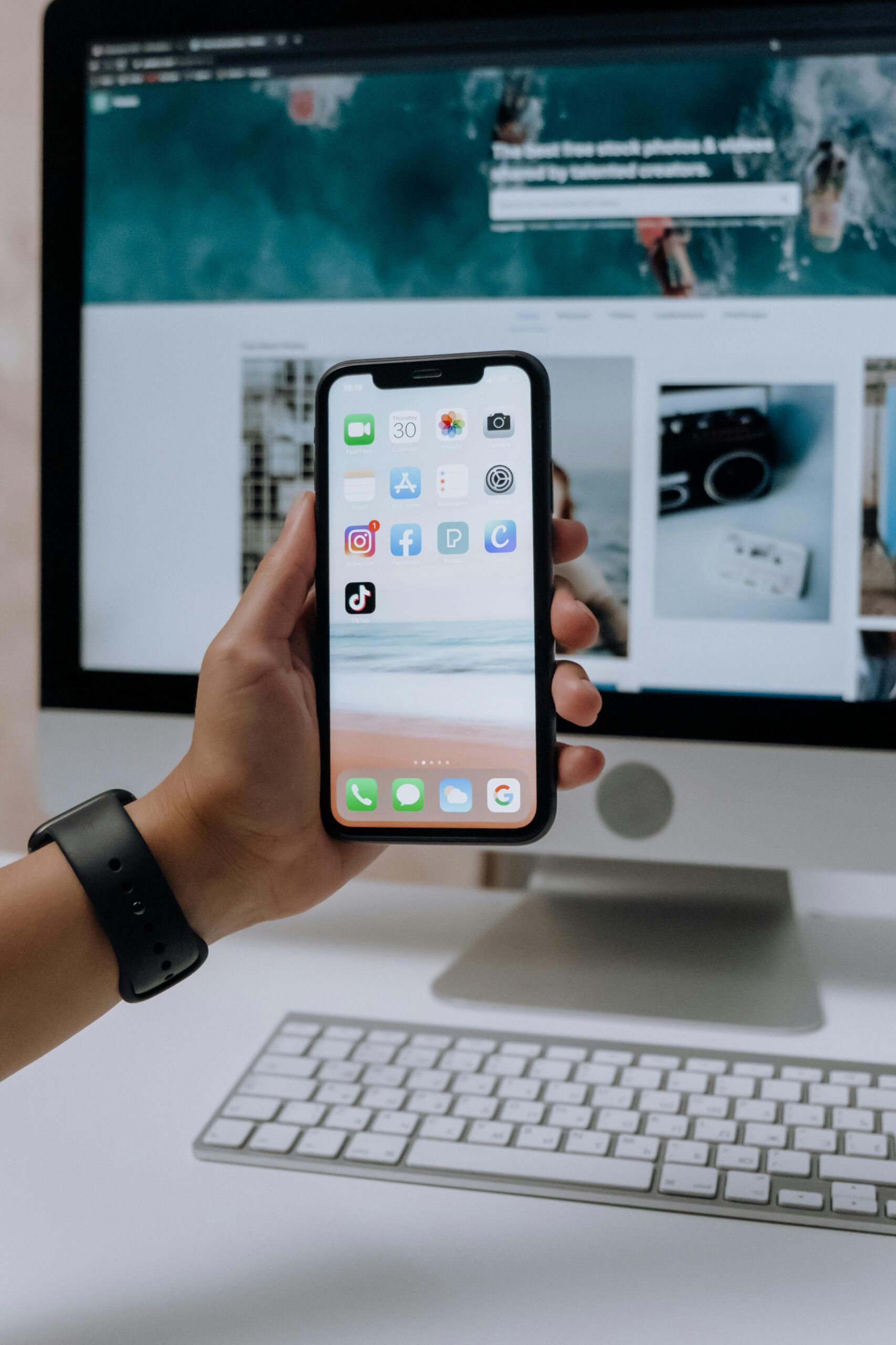

Live streaming has emerged as a vital and powerful tool in a brand’s marketing arsenal, offering a direct, interactive, and real-time connection with the public. Brands across various industries are discovering innovative ways to engage with their online audiences, but how can brands navigate success in this space?
This article will provide a topline understanding of available live streaming platforms, their unique features, and how these can help shape your strategic roadmap. As we delve into this topic, keep these three key principles in mind for defining your live strategy:
Live streaming refers to delivering content live over the internet as it happens. Its popularity surged during the pandemic as it became an accessible platform for celebrities, brands, and individuals to host fundraisers, events, and other activities. Nowadays, while not as prevalent, its impact is lasting, with 1 in 4 internet users actively engaging with live streaming in some form.
Live streaming is a whitespace opportunity for storytelling and building emotional connections. It allows brands to expand their reach strategically, strengthen bonds with online communities, and stay at the forefront of promotional platforms. According to a study by Livestream and New York Magazine, 80% of audiences would rather watch live videos from a brand than read a blog post, and 82% prefer live videos from a brand to social posts. This significant preference highlights the potential for higher engagement and connection with live-streaming content. The direct interaction provides valuable real-time feedback on product launches, webinars, live Q&As, immersive brand experiences, and new ways of engaging your audience.
The value of any live-streaming platform lies in its ability to build anticipation, gather real-time feedback, and measure success beyond simple viewer metrics. When selecting a platform, it’s crucial to consider its reach and how its distinct features align with your goals.
This article focuses on the Big Four live streaming platforms: Facebook Live, Instagram Live, Twitch, and YouTube Live:
Facebook Live: Once a leader in the live streaming trend, shadowed nowadays by its competition. With over 1.3 billion hours watched in Q4 2023, it appeals to various demographics. Features like follower notifications and scheduling live streams make it valuable for smaller, more local brand awareness. Additionally, Facebook Live broadcasts are watched three times longer than pre-recorded videos on the platform, indicating higher engagement levels. Chevrolet took to Facebook live to reveal the new Chevy Cruze, a live event with a tour of the new car, and interviews with key designers. This live brand activation saw 3.5 million viewers during the live broadcast and accumulated over 2 million views post-event, a significant boost to awareness of the new car model.
Instagram Live: Ideal for influencer marketing and similar brand activations. For brands, it poses a truly unique and modern showcase of your brand, campaign, or products. Instagram Live video has seen a 70% increase in usage from February to March 2023, demonstrating its growing popularity and potential for reaching audiences. Its suite of live features includes chat, collaboration tools, Q&A, and other interactions, and notifies your followers when live, leverage this platform for more visually-driven, community-focused initiatives. Marc Jacobs leveraged the more visual elements to live stream the Marc Jacobs Fall/Winter Fashion Show, attracting 700’000 live viewers on Instagram Live, allowing their global audience to engage directly with the event, ask questions, and interact with the brand.
Twitch: Primarily a gaming content platform, Twitch has been an emerging testing ground for brand activations. Boasting the most concurrent viewers of all platforms, with roughly 5.5 billion hours watched in the last quarter of 2023. Twitch comes with a full set of interaction tools to build anticipation and engage directly with those in your community. A shining example of a brand with a thoughtful and direct “live strategy” is Adobe on Twitch. Here, while showing the latest and greatest new features across Adobe applications, they are engaging with live users, asking for feedback, insights, and polls to gauge sentiment – representing their brand with a more personal and human touch. With a lower reach than YouTube Live, brands should look to Twitch as a platform to deliver serialized content, made for live-streaming, with a strong focus on connecting and interacting directly with your viewers. Additionally, Twitch has over 30 million daily active users, making it a prime platform for reaching highly engaged audiences. Chipotle, leveraging the gaming focus of the platform launched the Chipotle Challenger Series, an esports competition featuring influencers in the space, garnering over 1 million live views during the broadcast and significant engagement through comments and likes on their promoted social posts.
YouTube Live: YouTube Live stream watch time has increased by 250% since 2020, indicating a significant rise in live content consumption. Widely known as the most universal live-streaming platform that exists, with 2.7 billion monthly active users as of early 2024. Above the sheer reach of the world’s go-to video content platform, live features empower brands to create visually distinct online brand spaces and optimize over time with deep analytics. Considering its low barrier for entry, a strong offering to create a distinct live streaming experience, and all necessary audience engagement tools, YouTube Live is the ideal platform for product launches, webinars, and other large-scale narrative marketing activations. To capitalize on the scale, Samsung used YouTube Live to unveil their latest Galaxy smartphones, showcase demos and more, this live campaign reached 10 million live users during the broadcast, and generated 25 million views after the event, making it one of the most-watched live streams for any product launch in the tech industry.
Looking at each platform individually, there are plenty of low-hanging fruits and long-term opportunities that can be leveraged by brands. However, if the goal is to purely maximize reach and visibility, brands can leverage the combined power of all live streaming platforms – multistreaming. Brands can simultaneously stream on multiple channels (e.g., YouTube, Twitch, Instagram) to reach a broader audience. This is useful for product & service launches, client stories, and interactive sessions to capture the potential of your online community. Red Bull famously leveraged this strategy for the Red Bull Stratos Jump with Austria skydiver Felix Baumgartner. Broadcasting on YouTube, Facebook, Twitch, Instagram Live as well as others, this single event was watched live by 8 million viewers across platforms. The event set multiple records in digital engagement and viewership, showcasing the power of multistreaming for brand activations. Red Bull significantly increased its brand visibility and fortified its image as a leader in extreme sports and innovative marketing strategies.
Now with a solid grasp of live streaming and its platforms, we remind ourselves of the three key principles:
Live streaming offers an unfiltered, raw experience; authenticity in live streaming is key. Audiences can easily detect insincere endorsements, so brands should strive for genuine connections. Avoid repurposing existing content for live formats; instead, create content that resonates with live audiences. Unlike pre-recorded content, live streams allow for real-time interaction, fostering a sense of community. A report by Vimeo found that live-streamed events see conversion rates of up to 30%, compared to the industry average of 2-3% for pre-recorded video content. This substantial increase in conversion rates demonstrates the effectiveness of live streaming in driving immediate action from viewers and how brands can capitalize on the feedback and engagement these interactions provide.
Is live streaming right for your strategic roadmap? As we’ve explored in this article, the “why?” is far more important than the “where?”. Define an objective for your live activations, have a clear purpose and output you seek to gain from engaging with a live audience and use it to fortify your brand or offerings. Live streams are conversations, not monologues, so engage viewers by asking questions, conducting polls, and responding to comments.
Live streaming isn't just a trend; it's a dynamic channel that is here to stay, a platform empowering brands to connect, engage, and grow. By embracing authenticity, interactivity, and strategic planning, your brand can harness the power of live streaming to leave a lasting impact on your audience.
Je suis un spécialiste en campagnes digitales et un marketeur polyvalent d'origine internationale, axé sur la création de campagnes captivantes et mesurables. Fort de mon expérience en tant que Brand Marketing Manager pour une agence genevoise, j'ai travaillé avec des marques mondialement reconnues et dirigé des campagnes d'envergure comme "Storm of Greatness". J'aspire à appliquer mes compétences à des projets significatifs et je vise à apporter une valeur ajoutée aux entreprises en quête de croissance, de défis et de diversité, en m'appuyant sur mon expérience pour développer leur marque et leur crédibilité.